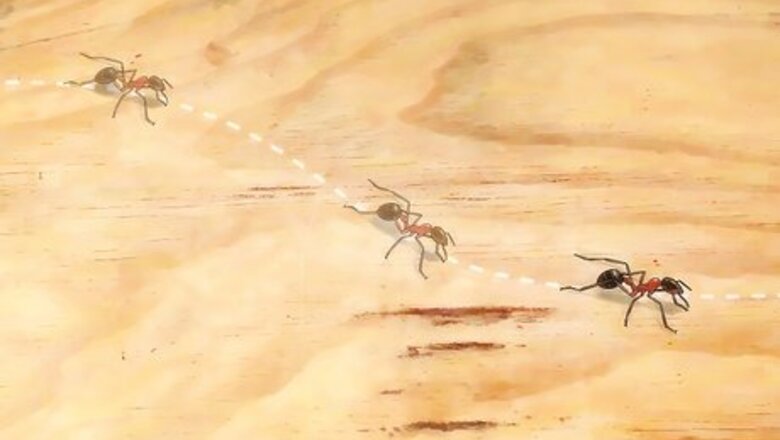
views
Preparing Ants for Identification
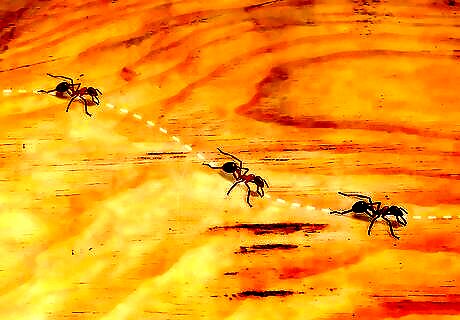
Take a minute to observe behavior. While not always necessary for identification, ant behavior does vary by species. Write down where you found the ants, and what they were eating or collecting if anything. Note whether the ants are all the same size and shape, or whether some are significantly larger than others. Optionally, you may observe how they carry food, how fast they run, their trail pattern, or even the postures they strike when disturbed. Most of these details will not be covered in this guide, but they may help later if you narrow down the identification to a couple species and need to perform a little outside research.
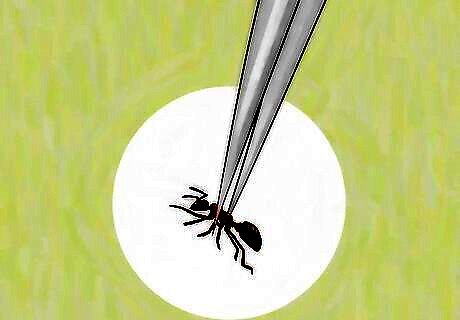
Collect ants with tweezers or an alcohol swab. Tweezers or more precise, but the end of a cloth or brush dampened with rubbing alcohol or ethanol will also work.

Kill the ant by freezing or alcohol. You may drop the ant in a plastic bag, seal it, and freeze it for 24 hours. Alternatively, drop the ant in a small jar with a shallow layer of alcohol, and examine after a few minutes.
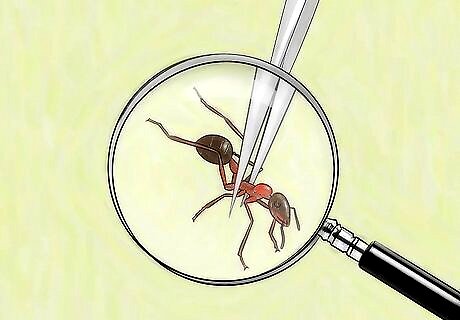
Find a hand lens or microscope. Identifying a specific ant species requires close examination of tiny body parts. A 10x or 15x lens should be strong enough, but you can use a microscope on low magnification if you happen to have one. A pair of tweezers will again be useful for investigation, for adjusting the ant's position.
Inspecting the Ant

Confirm the insect is an ant. This may sound silly, but some termites and wasps are often mistaken for ants. Confirm that the specimen has these basic characteristics: Ants have "elbowed" antenna, with a distinct joint, and narrow waists. Termites have straight antenna and no obvious waist. Some ants have stingers, while some wasps do not. Both insects have narrow waists, but ants have tiny "nodes" between the two body segments, while the segments connect directly on a wasp. Winged ants have four wings, with the front pair larger than the rear pair. If all four wings are the same size, you most likely have a termite.
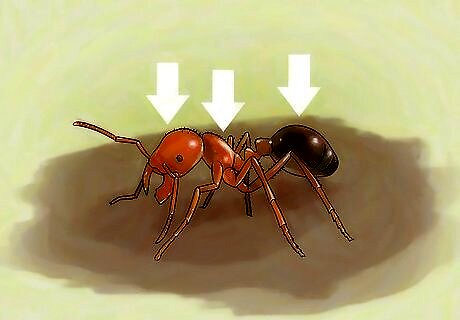
Identify the three body segments. Ants are made up of a head, central thorax, and rear abdomen. The final, large portion of the abdomen is called a gaster. Write down or make a mental note of the gaster's color.
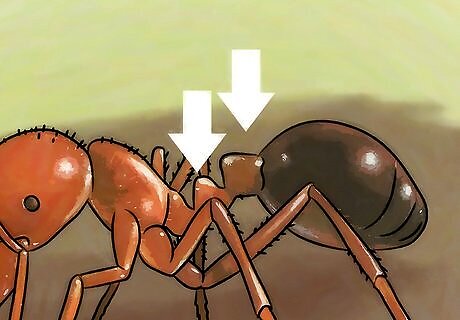
Search for the nodes. Ants have one or two smaller body parts between the thorax and the gaster, called nodes or petioles. These vary from tiny spikes, to relatively large square lumps, to flat segments that can only be seen once you pull apart the thorax and gaster with tweezers. These are the most distinctive part of the ant, and therefore the most useful for identification. Take note of the following: How many nodes there are (one or two) Shape of the node (sharp point, rounded bump, square/lump, or flat)

Examine the thorax closely for spines. Some species of ant, but not all, have a few spines on the top side of the thorax (large segment behind the head). These are often small and difficult to distinguish from hairs, so look carefully, and gently blow on them or brush with tweezers. Many species do not have thorax spines, while those that do most commonly have one to four near the rear of the thorax. Count the number of spines, if present.
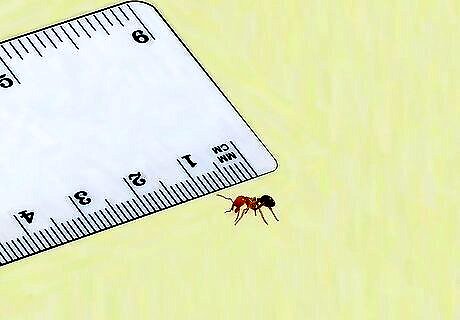
Measure the ant. Place the ant against a ruler and write down its size. If possible, use a ruler with millimeter markings, or /32 inch markings.
Narrowing the Search
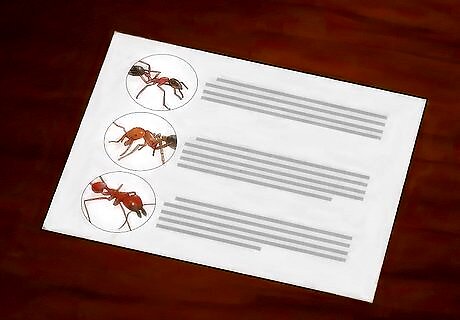
Find a list of ants in your area, if possible. There are thousands of species of ants worldwide, but typically only a few are likely to be encountered in a given region of the world. Save yourself time by knowing which ants are possibilities in your county or province, instead of reading every description. Some tropical countries and islands have interactive guides here, but not all of these are in a usable state.
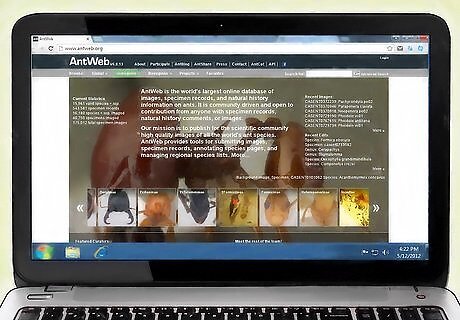
Use larger guides if necessary. Worldwide guides to ant species may require sifting through dozens or hundreds of species. If you can't find a local list, or if none of the ant species described below match your specimen's description, here are a couple good options: Visit AntWeb.org. Select Regions in small text near the top of the page, then select your region from the drop-down menu. Select "Nearctic" for Canada, the U.S., and Baja California. Select "Neotropical" for the rest of Mexico and Latin America. Alternatively, enter your specimen's information into Discover Life's database.
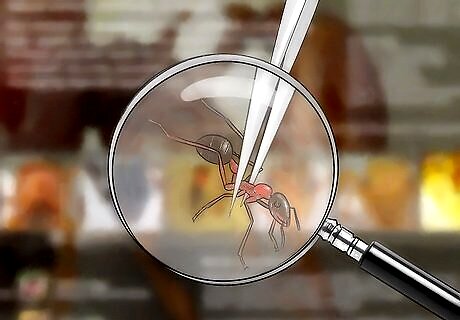
Refer to the ant specimen while reading the section below. The species descriptions below provide additional information whenever it may be useful. Head color, antenna shape (thin or "clubbed"), and other information may come in handy. Start by navigating to the section for one-node or two-node ants, depending on your specimen. In each section, the most widespread invasive ant species are listed in detail first. Other relatively common pest ant species with more restricted territories are given briefer descriptions beneath them.
Identifying One-Node Ants
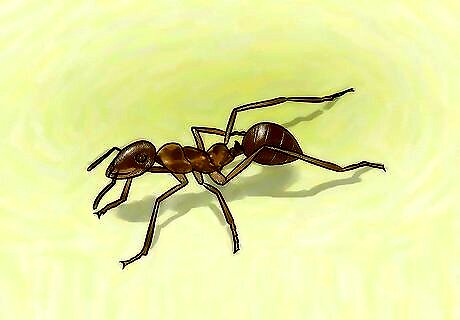
Identify Argentine ants. Found across most of the world, Argentine ants are dull brown and are all about ⅛" (3 mm) long, with a pointed node. They move rapidly in tight trails, prefer sugar but will eat protein and fat, and have a musty odor when crushed. Colonies are typically in damp areas outdoors, but are also found indoors. Eradication is extremely difficult due to multiple cooperating colonies and multiple queens per colony.
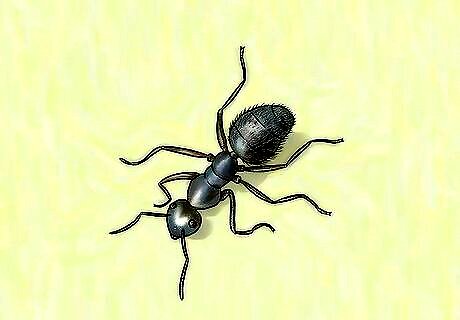
Distinguish Carpenter ants. These ants are black, dark brown, or dark red, or a combination of these. They vary in size from ¼" to ½" (6 to 12 mm), and have one erect node and no thorax spines. They move in loose trails and are often found near wood, along with a strong odor and piles of sawdust, soil, and insect parts. Look for trails across lawns where vegetation has been thinned or removed.
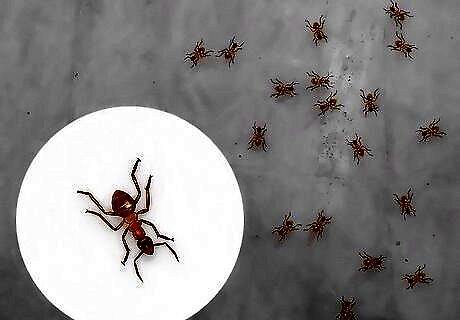
Determine Crazy ants. Crazy ants are named after their rapid changes of direction, and perhaps for their odd-looking, extra-long antenna and legs. Their slender, dark grey, black, or brown bodies are /16 to /8" (2–3.5 mm) long, have a flat node that's difficult to see, and have no spines. In the tropics, some crazy ant species are yellowish-brown instead and can be up to /5" (5 mm) long, with a darker gaster (rear abdomen).
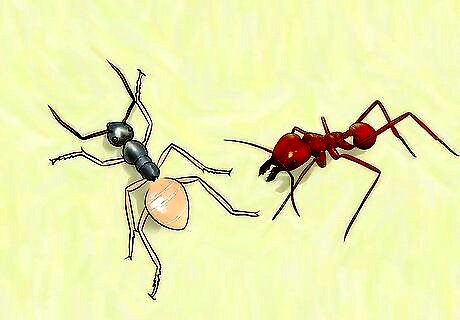
Identify other species. These one-node species are common pests in some areas, but much more limited in global distribution than the species above: Ghost ants: Very small (1/16" or 2 mm), with a black/brown head and pale abdomen. Flat, hidden node, no spines. Usually outdoors in tropics, or on plants from greenhouses or tropics. Odorous house ants: 1/8" (3.5 mm) long, one flat, hidden node, no spines. Strong, unusual odor when crushed. Primarily found in trails looking for sugar, but this varies. Rover ants: male workers are 1/16" (2 mm), small and black with unusual straight antenna. Most easily distinguished by the much larger, winged females, which are found near light or floating in standing water. White-footed ants: These 1/8" (3.5 mm) ants are usually black with pale "feet." A flat, hidden node, no thorax spines.
Identifying Two-Node Ants
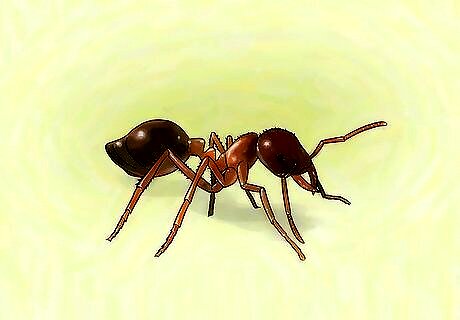
Identify Acrobat ants. These are any mix of brown, red, or black, about 1/8" (3.5 mm) or larger in size. When disturbed, these ants emit an odor and raise the stinger at the tip of the abdomen. Their nodes are slightly knobbly but not too raised. The nest is most easily found by following the trails and looking for dead ants near holes in walls.
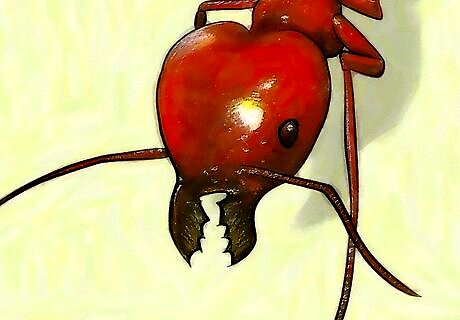
Figure out Big-Headed ants. These are easily identified by the massive head on the largest workers (1/8" or 3.5 mm body length), accompanied by smaller workers with more normal proportions (1/16" or 2mm). Two large, rounded nodes and two small thorax spines make these even easier to identify. These ants prefer to forage for protein foods.
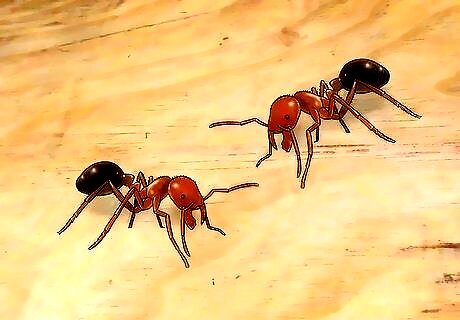
Diagnose Red Imported Fire ants. Imported fire ants are extremely aggressive, rushing out to attack intruders with painful stings. They range from 1/16" to 1/4" (2–7 mm) long, with two raised nodes, and have a gaster that's a much darker brown than the rest of the body. These often nest in electrical boxes and air conditioners, when established indoors. Outdoors, they are visible in large numbers after rainfall, rebuilding mound-shaped nests. Californians may be able to receive assistance dealing with this species.

Identify other species. The following two-node species are common pests in some areas, but not as widespread as the species above: Little black ants: Tiny (1/16" or 2mm) black ants, as you might guess. No spines and a tiny, almost invisible stinger make this ant difficult to identify. When nesting indoors, they are found in decaying wood and masonry. Pavement ants typically nest in soil or sidewalk (pavement) cracks, with small dirt "craters." Slow-moving, with distinct grooves visible under magnification. Pharaoh ants. Yellow or orange ants that will happily nest almost anywhere, with a slightly thicker three-segmented "club" at the end of the antenna. Non-professional extermination attempts can worsen the problem. Thief ants. Extremely tiny (1/16" or 2mm, or smaller) yellow or brown ants, with a two-segmented antenna club tip. They tend to stick to a trail once established and may be found traveling through electrical outlets or into small holes in packaged food.




















Comments
0 comment